Today's game was loosely based on the 1815 battle at Quatre Bras. A French corps & a cavalry corps under Ney attempted to block a British advance by seizing vital crossroads. A rather larger British/Hanoverian force under Wellington was equally determined to break through. Figures used were plastic 1/72 & metal 20mm from a variety of manufacturers.
The game went for some 4 hours or so and ended after 8 turns in a clear British victory. The table at game's end:
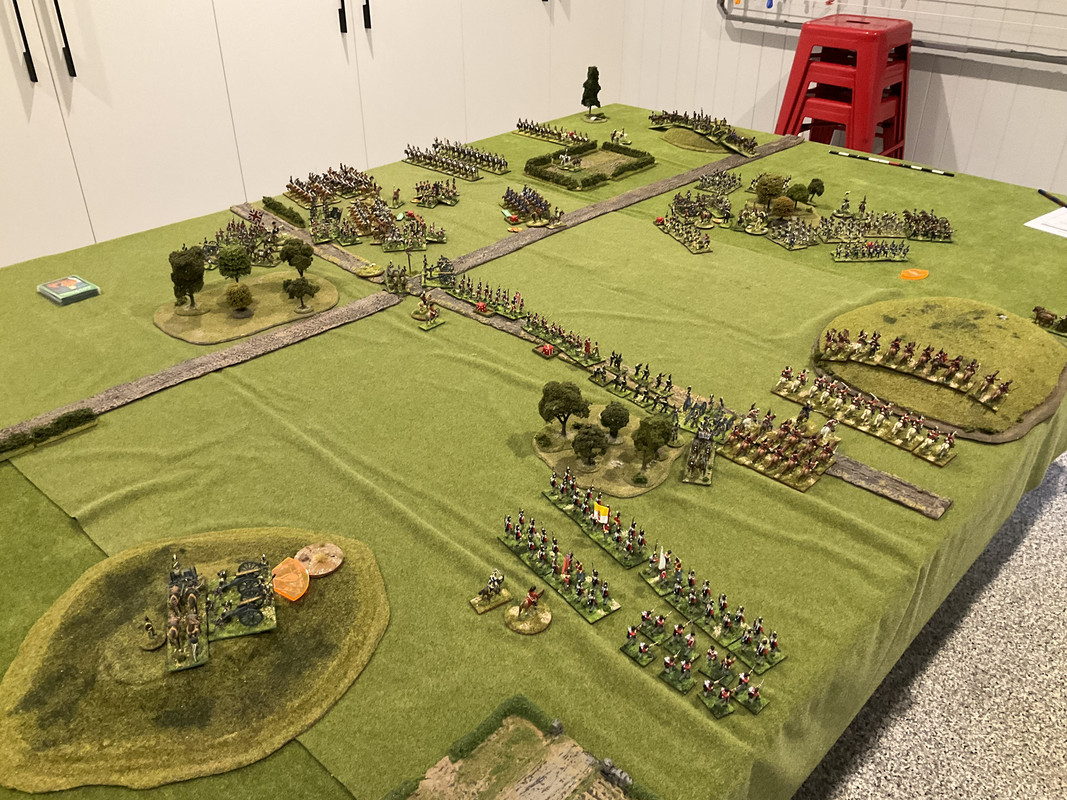 As you can see from the photo, the crossroads were in British hands. Equally, as you can see, this looks like a Napoleonic battle. And it felt like one, too. IMO this is an important fact. However, more important was the speed of the game - quite a large game finished in 4 hours.
As you can see from the photo, the crossroads were in British hands. Equally, as you can see, this looks like a Napoleonic battle. And it felt like one, too. IMO this is an important fact. However, more important was the speed of the game - quite a large game finished in 4 hours.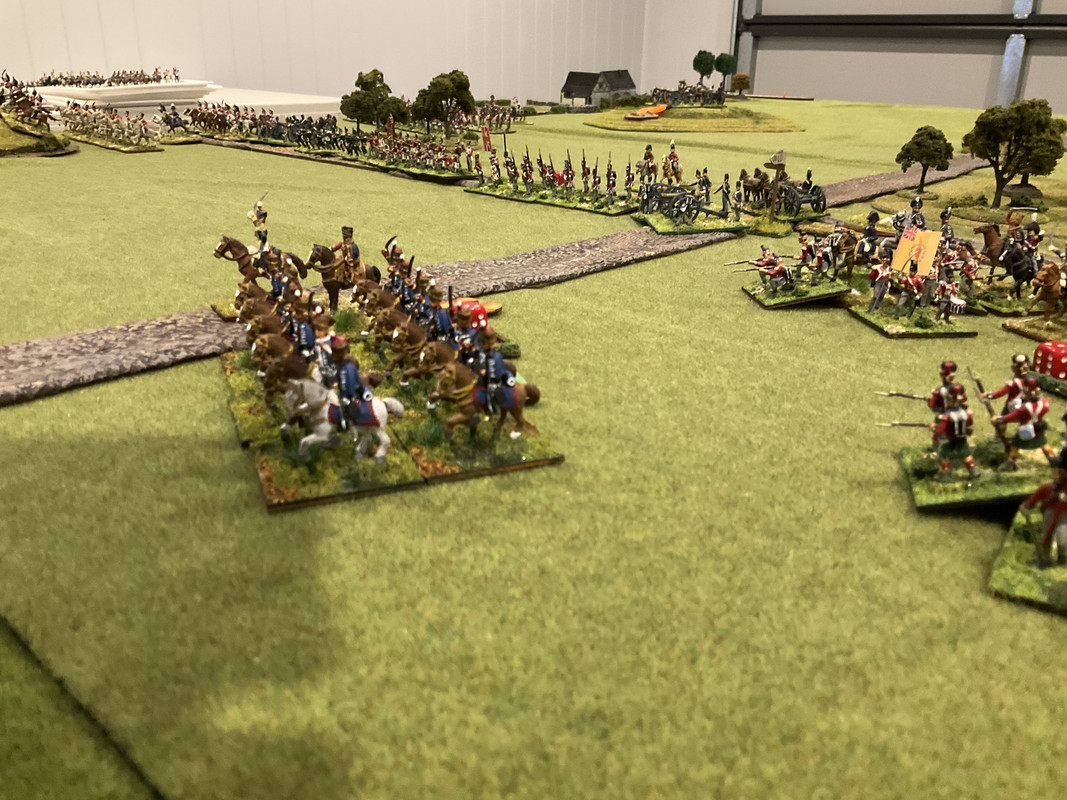
Now before you think how speed is essentially a superficial quality, let me stress that playing & finishing a large Napoleonic game is usually a marathon effort. And remember, 3 of us were new to the game. So as a side note on speed is the fact that my pals were soon playing like they'd gamed these rules on several occasions. They were actually thinking tactics, not grappling with complex game mechanisms.One comment was, "Next time, let's add a Corps aside & play for 5 hours."
This is not to say this is a perfect rule set. Such a thing doesn't exist of course. For the sake of speed, some aspects of Napoleonic warfare are simplified. Movement, in particular, is not the intricate & convoluted process in many other Napoleonic rule sets. I have to say that, does this matter?
The rules are also open to 'tweaks'. I think it dangerous to change too much, but we want to use 2 gun models for a battery (largely for aesthetics ).
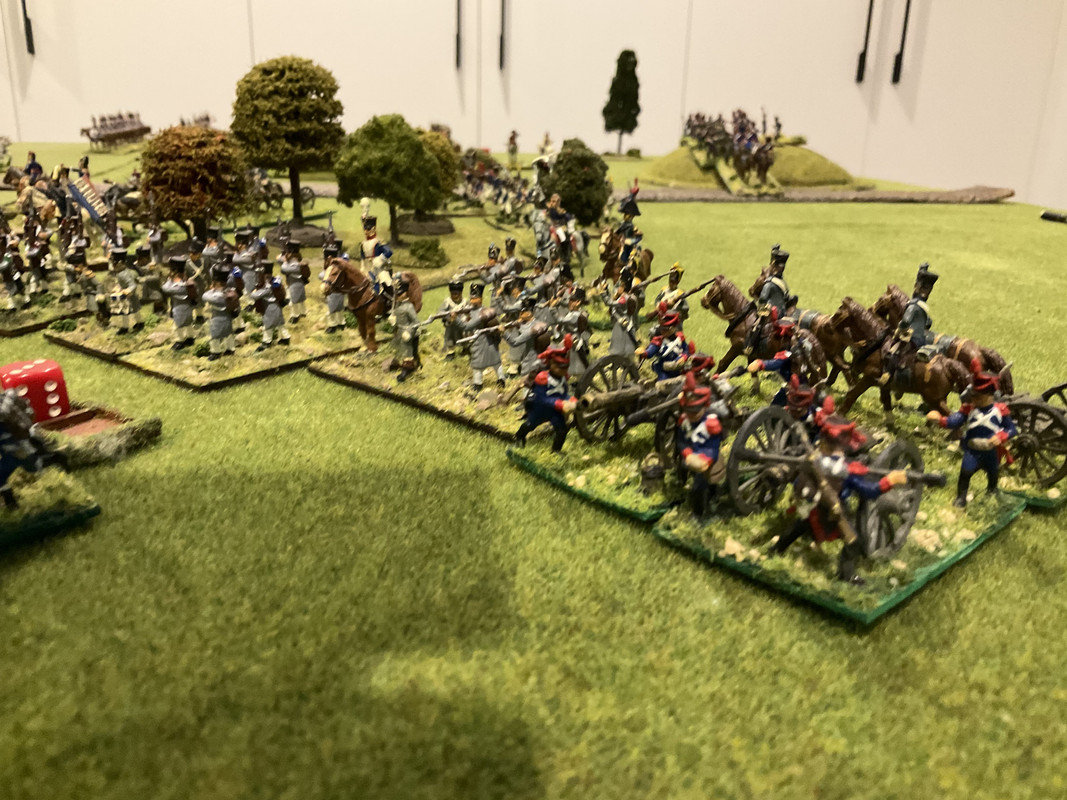
I think heavy & light cavalry should have different move rates.
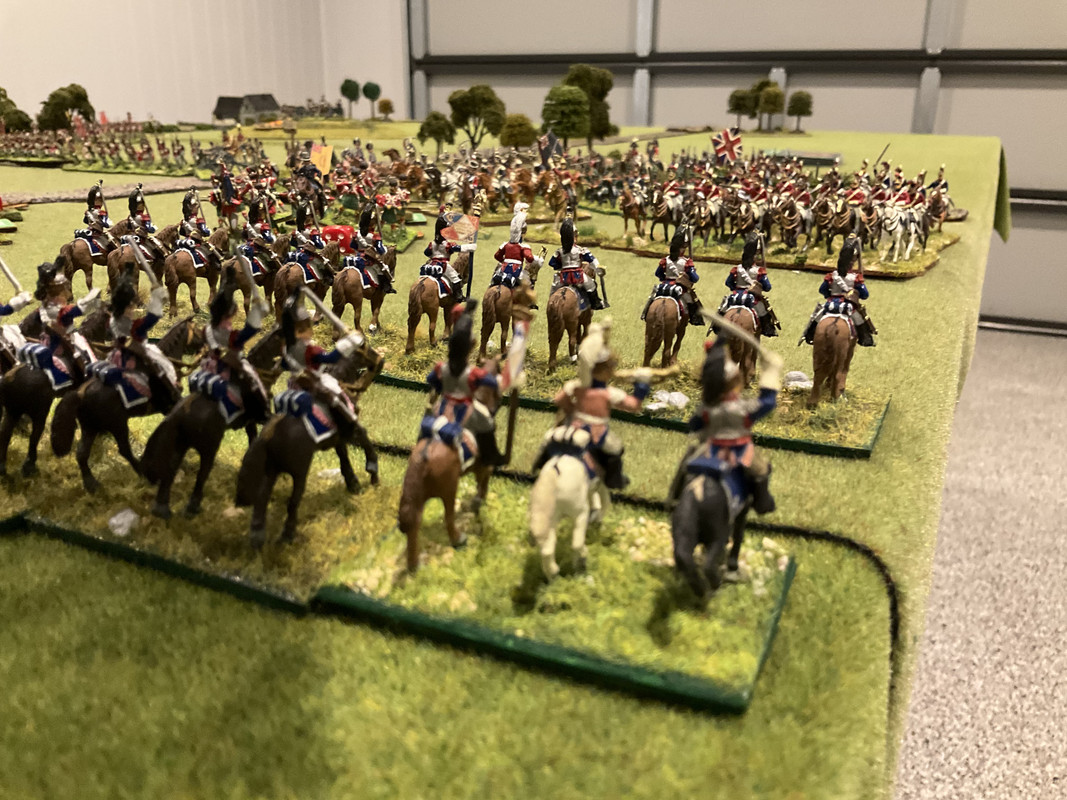
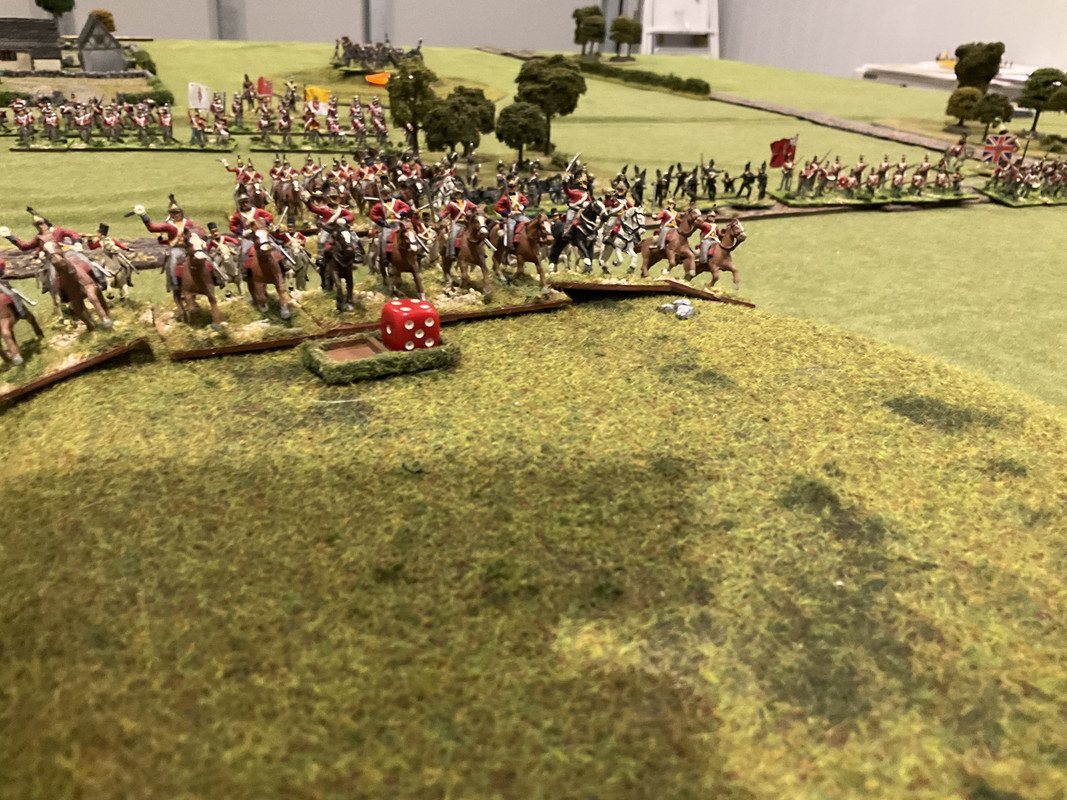
Overhead fire, with logical stipulations, should be allowed. etc.
I do recognise that these rules have unique & clever features - 'Firing' occurring before 'Actions', the concept of 'defensible terrain' and the fate/card & specific army sheets both of which add flavour to what might otherwise be too generic.
BTW a shout-out to my friend John Simmons who designed these amazing replacements for a standard deck of playing cards:
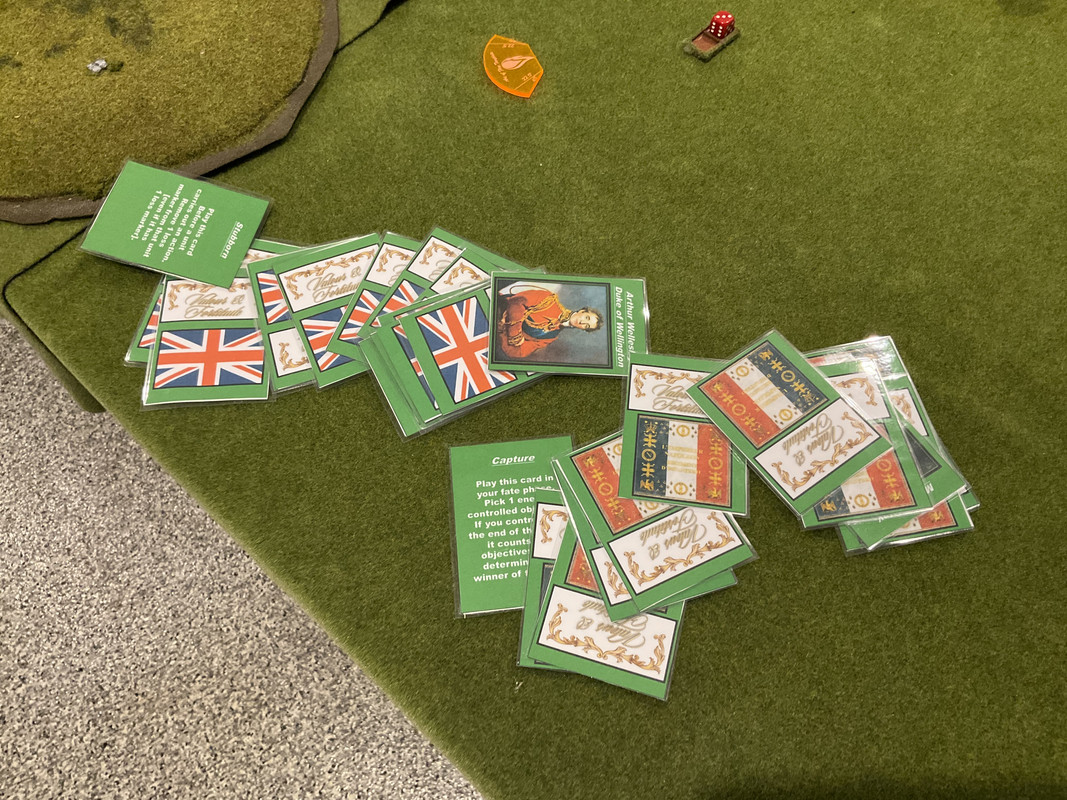
They're both pleasing to the eye & definitely speed up play.
I'm keen to keep using V&F but it is, of course, a consensus. I suspect that V&F ticks enough boxes for us to make it the staple for our Napoleonic gaming for the future.
donald

